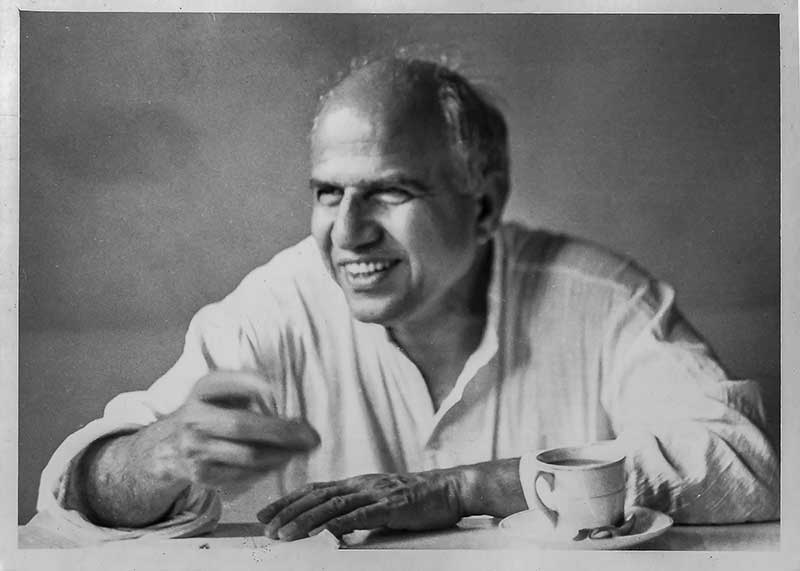- Visitor:11
- Published on:
The Foundation of Islam
In this article, Dr. Sheshrao More discusses the foundation of Islam and the behavior of Muslims, with also throwing light on the Quran and the Hadis. This is an excerpt from the book “Islam: Maker of the Muslim Mind” by Sheshrao More, a Marathi scholar of great repute. He originally wrote this book in Marathi, which has been translated into English by a team of scholars, edited by Shri S. H. Deshpande.

In a way, Islam may be classified into three categories:
- First, basic or fundamental Islam as enunciated in the Quran and Hadis.
- Second, traditional Islam interpreted and nurtured by Muslim clerics by reconciling the Quran, Hadis, Prophet’s biography and the guidance by the rightly guided first four Caliphs. It includes Shariah i.e. Islamic law.
- Third, practical Islam based on how Muslims have behaved and now behave.
There remain certain differences between these categories. Even if fundamental Islam is one, traditional Islam is not identical everywhere on account of varying interpretations. And due to different living conditions, practical Islam differs in the context of space and time; one country to another.
In spite of such differences the Quran remains the basic text and source for all hues of Islam. Everyone insists that he is presenting and also living as per the tenets of the Quran. Islam does not permit any practice which is contrary to the teachings of the Quran. When specific guidance is not found in the Quran, reference is made to Hadis as well as to the Prophet’s life. Obviously, Hadis or the Prophet’s life cannot be contrary to the teachings of the Quran, since all the three are based on Allah’s guidance. The religion propounded by the Quran is called Islam, and its follower is a ‘Muslim’. (7-1) One who surrenders to Allah is a Muslim. The Prophet has said: “I am the first of those who surrender (unto Him).” (6:163)
M. Mohammad Ali Says: “The original source from which all principles and ordinances of Islam are drawn is the Holy Book, called Al Quran,” (7-17)
Similarly, Khurshid Ahmad explains: “Islam is unique as a religion based on a Book – the Quran. So is the Islamic Ummah, whose identity and historical personality have been derived from and fashioned by the Quran. No influence has been greater than the Quran in shaping the spirit and ethos of Muslim culture and civilization. If we look at the long history of religions and civilizations, it may be said, without reservation, that if ever there was a book that produced a religion, a community, a culture and a civilization, it is the Quran. For this reason, the origins and destiny of the Muslim Ummah rest with the Quran… The real genius of the Muslim mind has expressed itself in its unceasing efforts to understand and interpret the word of God as enshrined in the Quran and as exemplified in the Sunnah of the Prophet.” (117-v)
Muslims honestly believe that the Quran has not only built their mind and perfected their life, but has also made them victorious. Khurshid Ahmad rightly claims: “It was the Quran which can once again set their home in order and enable them to win back their rightful place in the world.” (Viii) Therefore, often a call is given to ‘go back to the Quran.’ It is considered to be a ‘miracle’. (11-159) we shall now briefly study the Book which has ruled the hearts and built the minds of, and thus has had a tremendous impact over, two billion Muslims of the world.
Structure of the Quran
Let us first understand the nature and structure of the Quran. It is, undoubtedly, available as a definite text. It was originally revealed and compiled in Arabic, but has now been translated in almost every important language of the world. It is observed that most of the translations are uniform and free from any material difference, except for some variations in use of equivalent words.
All over the world there is only one standard text of the Quran, which is recognized by all the sects of Muslims. It is believed that it is just the same as revealed by Allah. Consequently, there is no controversy about the authencity of any passage or word occurs (i.e. the interpretation). The context is often not provided by the Quran, making it necessary to link it to the Prophet’s life, time and history. Most of the non-Muslims have no knowledge of this and hence, they take the literal meaning, claim that they have understood it and argue with others. Therefore, it is very necessary to understand the context of the Quranic utterances to interpret their meaning. And for this purpose, it becomes necessary to study the nature and the structure of the Quran.
The Surahs and the Ayats
There are altogether 114 Chapters or Surahs in the Quran. The individual verse in each Surah is called Ayat. These have been subsequently numbered by Muslim Scholars. Five different systems, their names indicating their place of origin, of assigning numbers are in vogue. These are: Kufa, Basra, Shami (Syria), Mecca and Madina, according to which the numbers of Ayats are 6239, 6204, 6225, 6219 and 6211 respectively (105-489, 7-48).
This different arises due to splitting of one verse into two by some scholars. Every Surah, except one, starts with the invocation: “In the Name of Allah, the Beneficent, the Merciful.” This Ayat is called ‘Bismillah Ayat’. There are such 113 Ayats’ in the Quran. It is not numbered and hence not accounted for in the above totals of Ayats. The numbers of words and letters (in Arabic) have also been counted and they are 77,394 and 3,23,621 respectively. (73-27)
The first Ayat of 29 Surahs begins with a few (abbreviated) mystic letters. No one so far has been able to decipher their undisputed meaning. They remain a mystery to this day.
All the Surahs are not of the same size. The shortest three (i.e., nos. 103, 108 and 110) contain only three Ayats each. Out of these the 108th is the shortest in terms of words and letters, namely 10 and 37 respectively. Two Surahs, 106 and 112, have four Ayats each; and Surahs 97, 104 and 111 have five each. The longest Surah, no. 2, has 286 Ayats. There are three Surahs containing more than 200 Ayats, namely nos. 3 (200), 7(206) and 26(227).
In general, the longer Surahs appear at the beginning of the Quran, followed by shorter ones. But there are many exceptions to this. For example, the 7th Surah has 206 Ayats whereas the 8th has 75: the 13th and 14th have 43 and 52 respectively; the 25th and 26th have 77 and 227 and the 36th, 37th and 38th Surahs have 83, 182 and 88 Ayats respectively. Ayesha, the Prophet’s wife, has explained that they are arranged such that earlier Surahs lay stress on duties and responsibilities, while the later ones on religion and mode of worship. (79-86)
Each Surah contains an average of 55 Ayats each. Seventy-three Surahs (i.e. 63% of total) have lesser Ayats than the average. Just six Surahs (nos. 2, 3, 4, 7, 26 and 37) cover twenty percent of the Quran (1277 out of 6329 Ayats). As a result, fifty percent of the Book is occupied by the first nineteen Surahs and fifty percent by the balance ninety-five.
On an average, each Ayat comprises about twelve to thirteen Arabic words. The first Surah, regarded as ‘the essence of the Quran’, has only seven Ayats and twenty-five Arabic words. This Surah which forms a part of regular prayers and enjoys utmost importance appears at the beginning of the Quran. About this Surah, the Quran declares: “We have given you seven of the oft-repeated (verses).” (15:87)
- 5 min read
- 0
- 0










